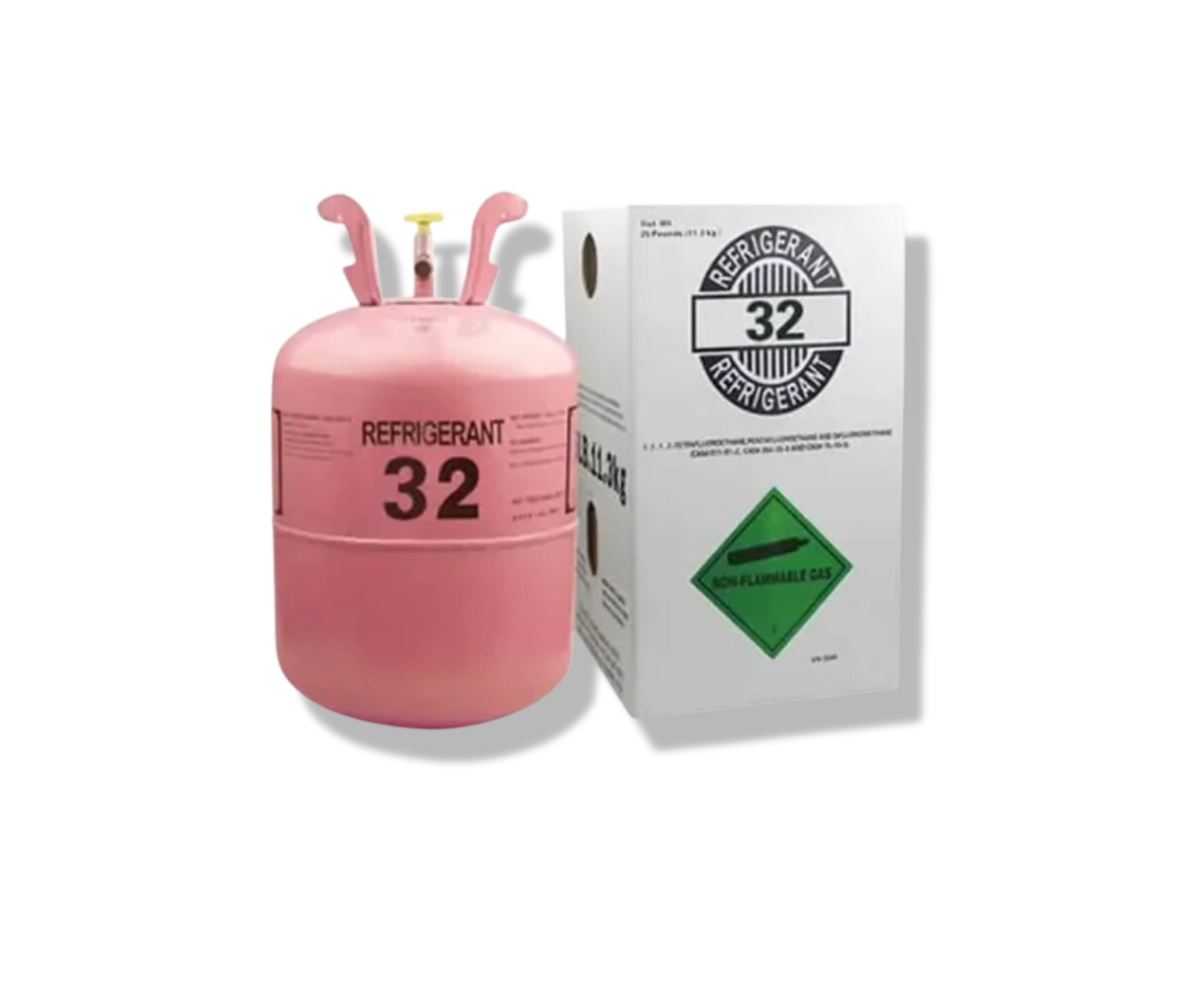Why the Change?
Change can be good, but change takes some getting used to some times. Learn nore about the change below.
When is it happening?
The change is already well underway, but there are varying opinions of the exact effects of this change. The general consensus is the fact the residentail HVAC Equipment is well on its way to a large increase in cost.


WHY?
1. Environmental Impact
Lower Global Warming Potential (GWP): R32 has a much lower global warming potential than R410A, which has been widely used in modern HVAC systems. The GWP of R32 is 675, which is significantly lower than R410A’s GWP of 2088. This makes R32 a more environmentally friendly option.
Ozone Layer Friendly: Unlike older refrigerants like R22, which damages the ozone layer, R32 has zero ozone depletion potential (ODP). This aligns with global environmental regulations, such as the Montreal Protocol, which aims to phase out harmful refrigerants that deplete the ozone layer.
2. Energy Efficiency
Higher Efficiency: R32 is more efficient than R410A, meaning HVAC systems using R32 require less energy to produce the same amount of cooling or heating. This leads to lower electricity consumption, which can translate to lower energy bills for consumers and reduced strain on power grids.
Improved Performance: R32 has better heat transfer properties than many other refrigerants. This allows for more effective and faster cooling, making it an attractive option for manufacturers aiming to design more efficient and compact systems.
3. Cost and Practicality
Less Refrigerant Required: R32 systems require about 30% less refrigerant to achieve the same cooling capacity as R410A systems. This can lower both the initial cost of charging the system and the long-term operating costs.
Compatibility with Existing Equipment: While R32 is not a direct drop-in replacement for R410A in existing systems, many newer systems are being designed specifically for R32. Retrofitting existing systems is generally not recommended due to differences in chemical properties and safety requirements.
4. Safety Considerations
Mild Flammability:One drawback of R32 is that it is classified as mildly flammable (A2L classification). While it’s not as dangerous as highly flammable refrigerants, it does require certain safety precautions during handling, installation, and servicing. HVAC technicians must follow specific guidelines to minimize risks associated with its flammability.
Training and Standards: As R32 becomes more common, the industry is adapting by offering updated training and safety standards to ensure technicians can work with it safely.
Conclusion
The shift to R32 refrigerant in HVAC systems is largely driven by environmental regulations aimed at reducing greenhouse gas emissions and improving energy efficiency. While it has a few challenges, such as mild flammability, R32 offers significant benefits in terms of lower environmental impact and better performance, making it a promising solution for future HVAC systems.
WHEN?
Short-Term Availability (2020s to Early 2030s): In the near term, R410A will still be available, especially for servicing and maintaining existing HVAC systems. Manufacturers are already transitioning to refrigerants with lower GWP, like R32 and R454B, for new systems. However, R410A will continue to be used in older systems that are still in operation.
Mid-Term Availability (2030s): As regulations take full effect, R410A will become increasingly scarce, and the production of R410A will decrease significantly. The cost of R410A is likely to rise as supply dwindles, and its use will primarily be limited to servicing existing systems rather than installing new ones.
Lifespan of R410A Systems: Many HVAC systems have a lifespan of 10 to 15 years or more. This means that even after new R410A systems are no longer being sold (likely within the next decade), there will still be demand for R410A to service existing systems. As older systems continue to age, R410A will still be around for maintenance and repair purposes.
Reclamation and Recycling: After the production of R410A is reduced or stopped, HVAC service companies will rely more on reclaimed and recycled R410A to service older systems. This will prolong the availability of R410A, even as new production ceases.

WHERE WE STAND
Don't be overly pressured: This has happened before with R22 and spanned over a couple decades. Chances are this will be faster than that, but R410a is still a widely used and dependable refrigerant and will still be easily obtainable and although may go up in cost a little bit. You will not be left in the dark with a 410a system.
Reclamation and Recycling: After the production of R410A is reduced or stopped, HVAC service companies will rely more on reclaimed and recycled R410A to service older systems. This will prolong the availability of R410A, even as new production ceases.
This change will come at a cost: New R34/R454b systems will be significantly more costly. Requiring special tools, handling, etc. Some manufacturer's have incurred big financial losses due to the change and they will make up for it in pricing for these new systems.
Inventory Discounts: We are offering discounts on all 410a equipment while supplies last and even combining them with an extended warranty service package to back up our opinion on the timeline of this change.
